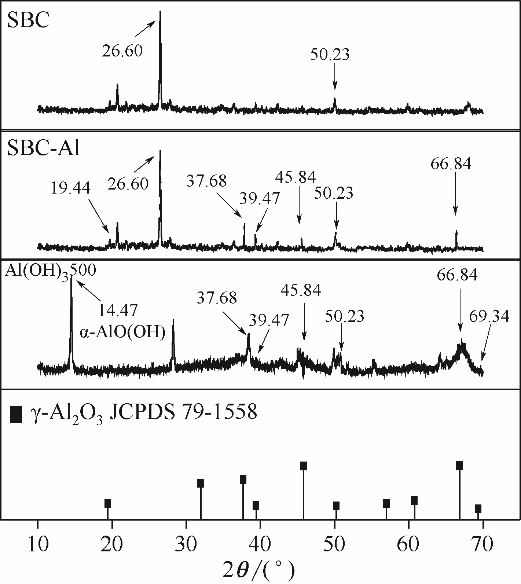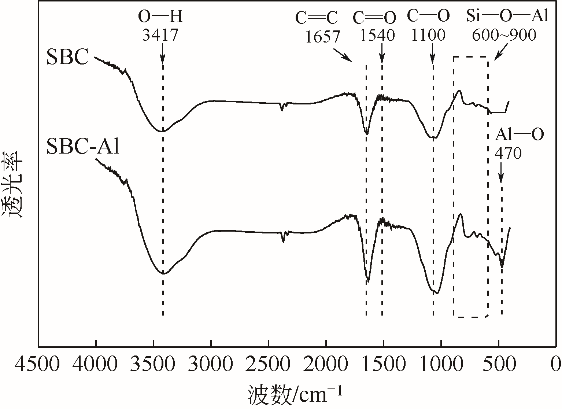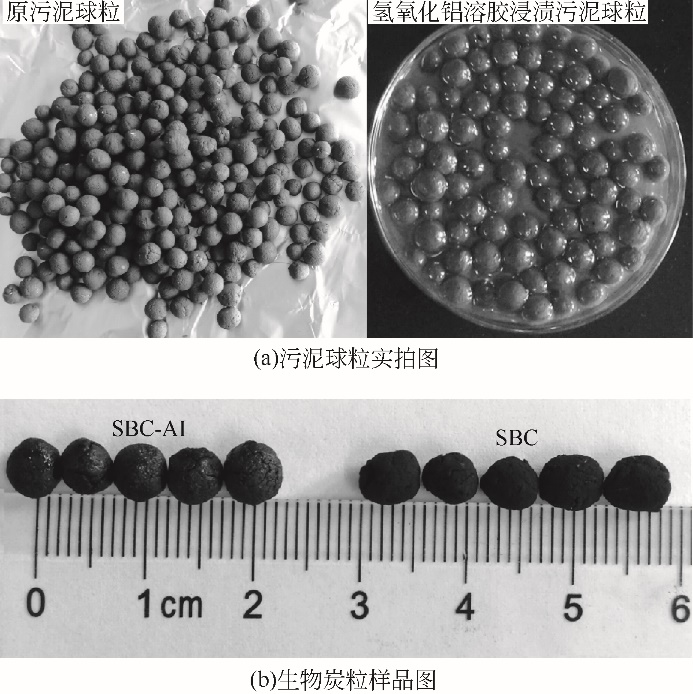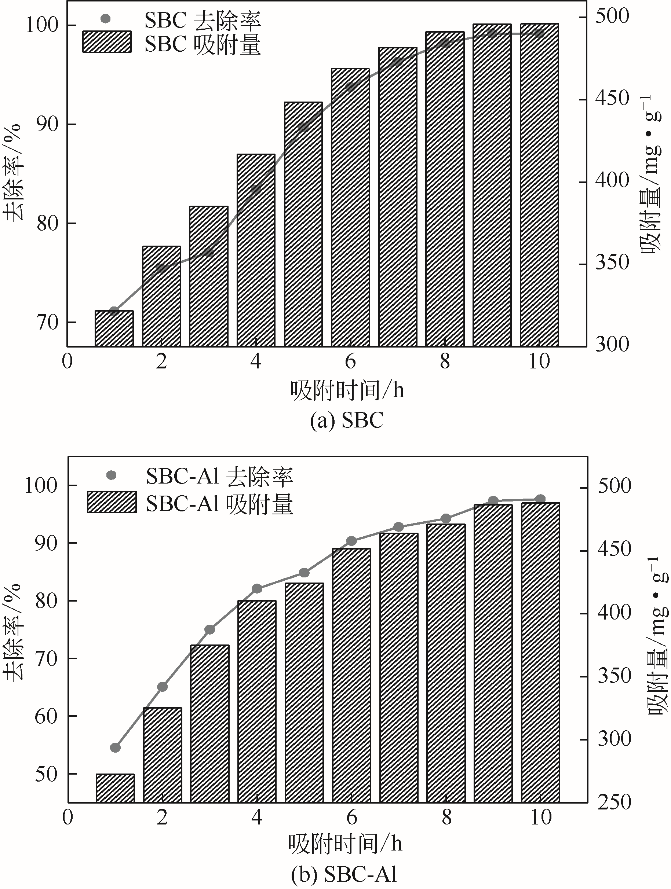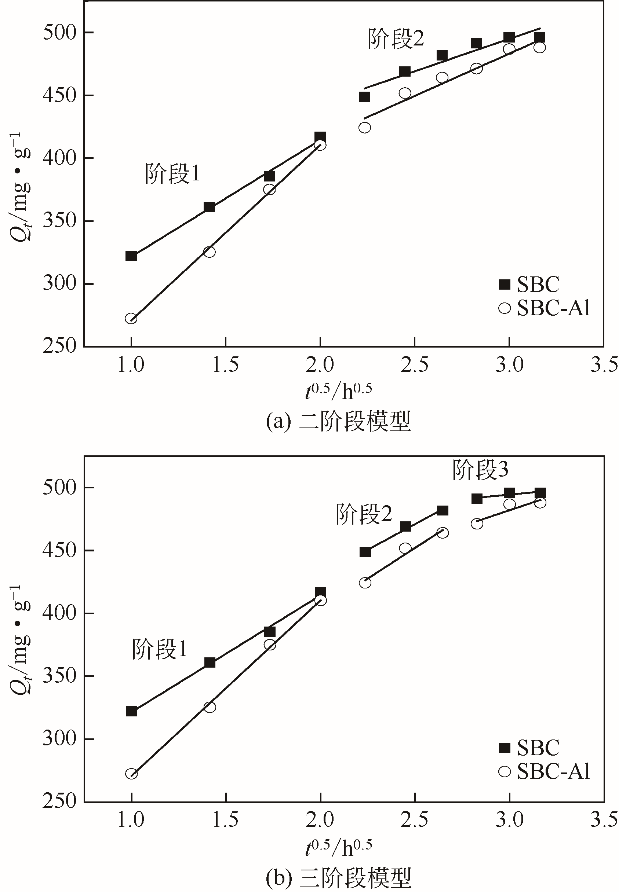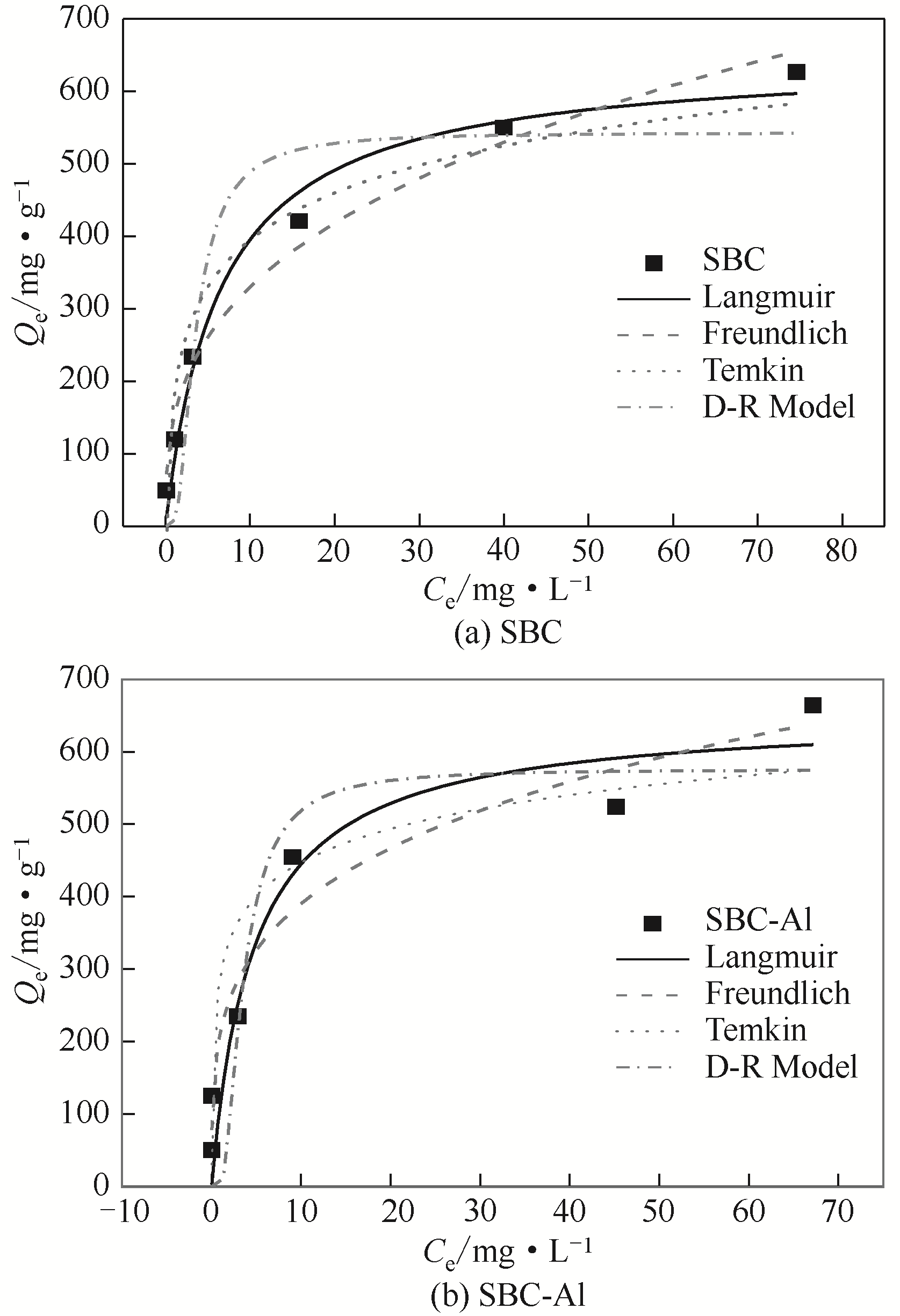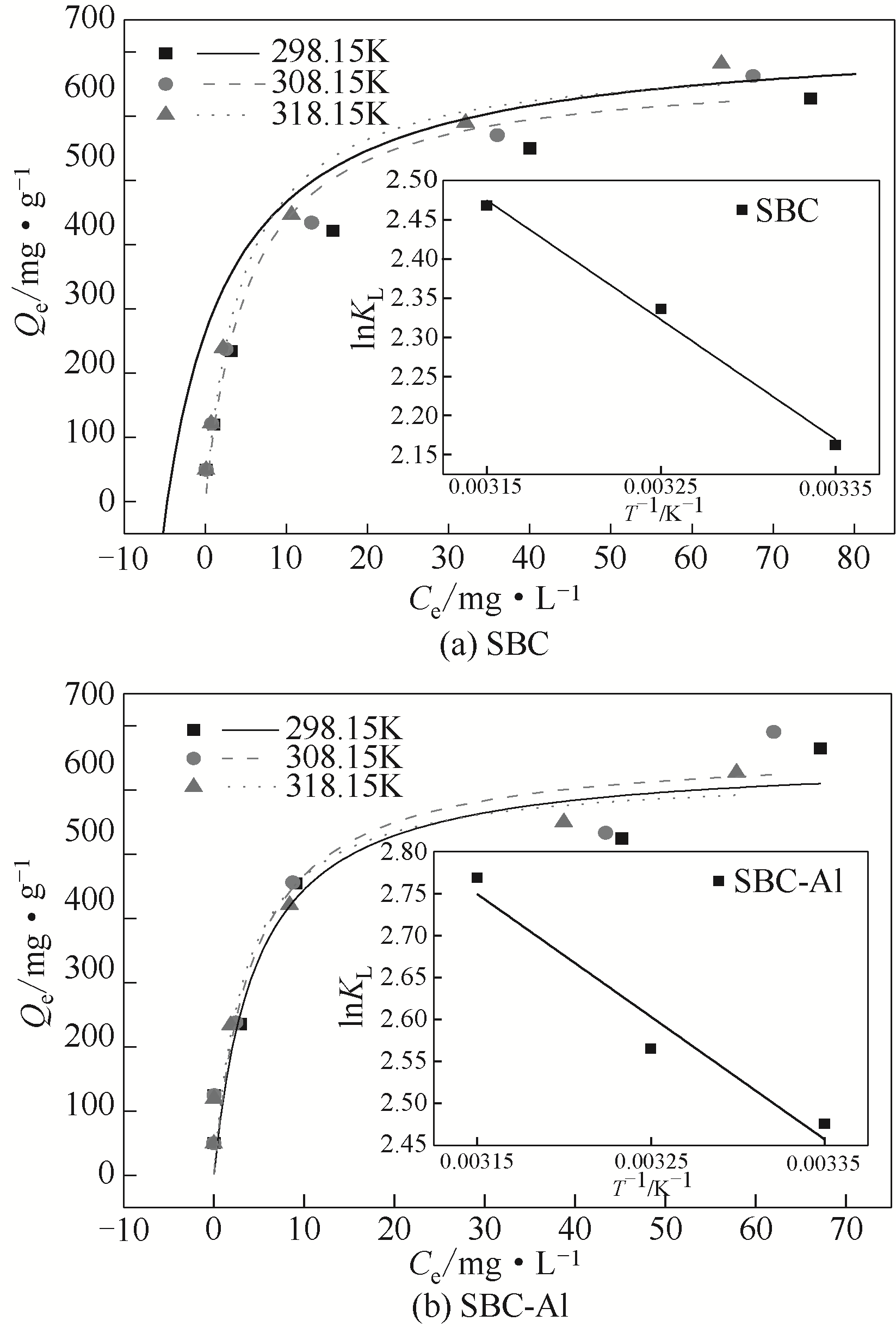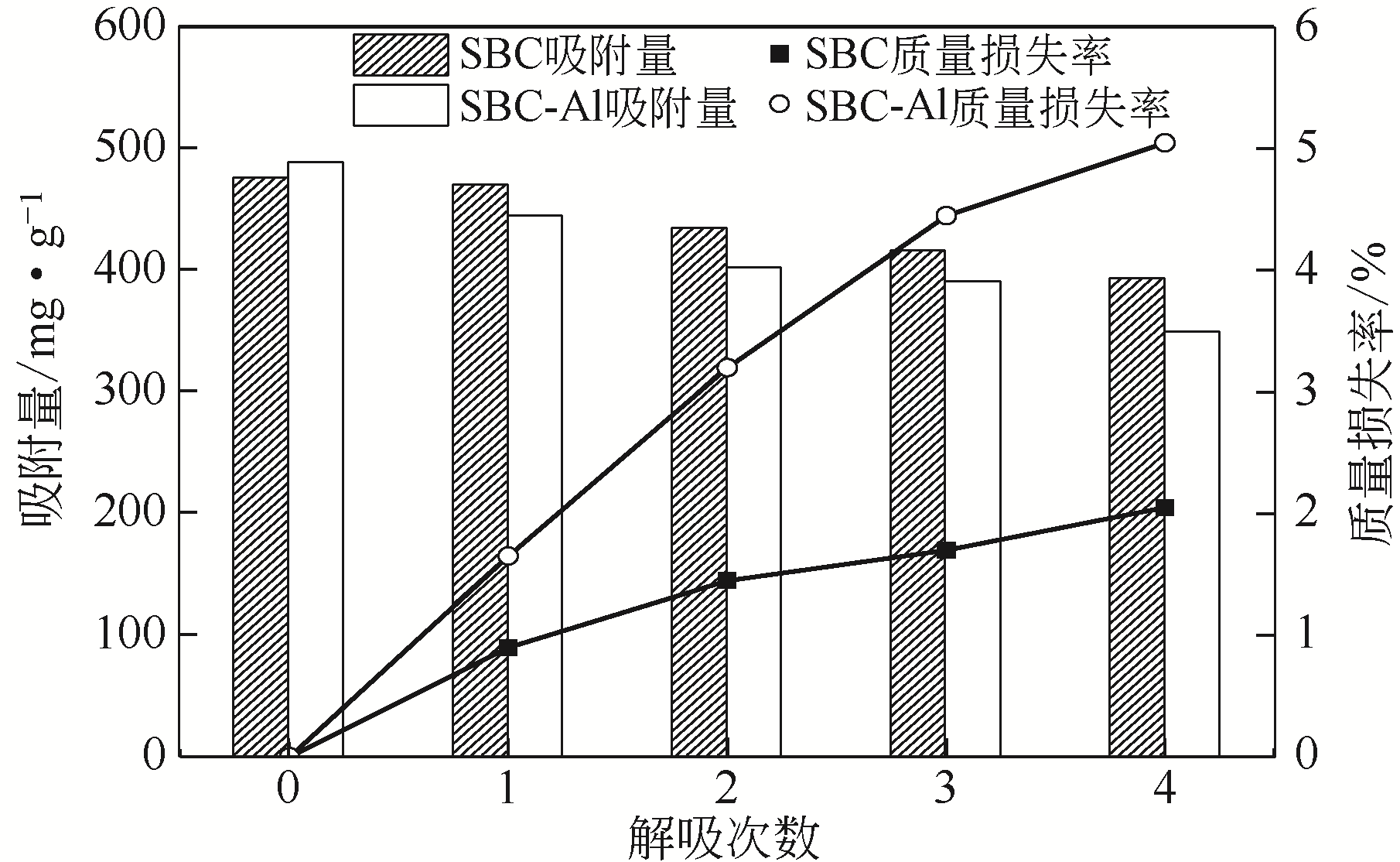| 53 |
ZHANG Lianke,LIU Xinyu,WANG Weida,et al.Characteristics and mechanism of lead adsorption from aqueous solutions by oil crops straw-derived biochar[J].Transactions of the Chinese Society of Agricultural Engineering,2018,34(7):218-226.
|
| 54 |
秦婷婷,王兆炜,朱俊民,等.花椰菜基生物炭对水中Pb(Ⅱ)的吸附性能[J].环境科学学报,2017,37(8):2977-2988.
|
|
QIN Tingting,WANG Zhaowei,ZHU Junmin,et al.Adsorption characteristics of Pb(Ⅱ) by biochars derived from cauliflower (Brassica oleracea L. ) from aqueous solution[J].Acta Scientiae Circumstantiae,2017,37(8):2977-2988.
|
| 55 |
ZHUANG Fuqiang,TAN Ruiqin,SHEN Wenfeng,et al.Monodisperse magnetic hydroxyapatite/Fe3O4 microspheres for removal of lead(Ⅱ) from aqueous solution[J].Journal of Alloys & Compounds,2015,637:531-537.
|
| 56 |
ZHAO Yueling,ZHANG Ruyu,LIU Haibo,et al.Green preparation of magnetic biochar for the effective accumulation of Pb(Ⅱ): performance and mechanism[J].Chemical Engineering Journal,2019,375:122011.
|
| 57 |
YIN Weiqin,DAI Dian,HOU Jianhua,et al.Hierarchical porous biochar-based functional materials derived from biowaste for Pb(Ⅱ) removal[J].Applied Surface Science,2019,465:297-302.
|
| 1 |
杨珂玲,张宏志,张志刚,等.铅暴露的环境健康风险评估模型的本土化研究[J].中国人口·资源与环境,2016,26(2):163-169.
|
|
YANG Keling,ZHANG Hongzhi,ZHANG Zhigang,et al.Localization study of environmental health risk assessment model for lead exposure[J].China Population,Resources and Environment,2016,26(2):163-169.
|
| 2 |
陈林,钱秀荣,赵秋妮,等.铅暴露健康危害风险评估研究进展[J].中国职业医学,2018,45(3):401-405.
|
|
CHEN Lin,QIAN Xiurong,ZHAO Qiuni,et al.Research progress on health hazard risk assessment of lead exposure[J].China Occupational Medicine,2018,45(3):401-405.
|
| 3 |
蔡蕊,宋黎明,庞长泷,等.利用农业废弃物处理水体重金属污染的研究进展[J].中国给水排水,2014,30(24):61-65.
|
|
CAI Rui,SONG Liming,PANG Changlong,et al.Advances in research on agricultural waste material for treatment of heavy metal ions in water[J].China Water & Wastewater,2014,30(24):61-65.
|
| 4 |
GHAEDI M,MOSALLANEJAD N.Removal of heavy metal ions from polluted waters by using of low cost adsorbents[J].Journal of Chemical Health Risks,2018,3:1.
|
| 5 |
刘金燕,刘立华,薛建荣,等.重金属废水吸附处理的研究进展[J].环境化学,2018,37(9):2016-2024.
|
|
LIU Jinyan,LIU Lihua,XUE Jianrong,et al.Research progress on treatment of heavy metal wastewater by adsorption[J].Environmental Chemistry,2018,37(9):2016-2024.
|
| 6 |
GODWIN P,PAN Yuanfeng,XIAO Huining,et al.Progress in the preparation and application of modified biochar for improving heavy metal ion removal from wastewater[J].Journal of Bioresources and Bioproducts,2019,4:31-42.
|
| 7 |
MIAN M M,LIU Guijian.Recent progress in biochar-supported photocatalysts: synthesis, role of biochar, and applications[J].RSC Advances,2018,8:14237-14248.
|
| 8 |
O'CONNOR D,PENG Tianyue,ZHANG Junli,et al.Biochar application for the remediation of heavy metal polluted land: a review ofin situ field trials[J].Science of the Total Environment,2018,619:815-826.
|
| 9 |
WANG Shengsen,GAO Bin,LI Yuncong,et al.Manganese oxide-modified biochars: preparation, characterization, and sorption of arsenate and lead: biomass, bioenergy, biowastes, conversion technologies, biotransformations, production technologies[J].Bioresour Technol.,2015,181:13-17.
|
| 10 |
曹玮,周航,邓贵友,等.改性谷壳生物炭负载磁性Fe去除废水中Pb2+的效果及机制[J].环境工程学报,2017,11(3):1437-1444.
|
|
CAO Wei,ZHOU Hang,DENG Guiyou,et al.Effects and mechanisms of magnetic iron supported on rice husk biochar removing Pb2+ in wastewater[J].Chinese Journal of Environmental Engineering,2017,11(3):1437-1444.
|
| 11 |
于长江,董心雨,王苗,等.海藻酸钙/生物炭复合材料的制备及其对Pb(Ⅱ)的吸附性能和机制[J].环境科学,2018,39(8):3719-3728.
|
|
YU Changjiang,DONG Xinyu,WANG Miao,et al.Preparation and characterization of a calcium alginate/biochar microsphere and its adsorption characteristics and mechanisms for Pb(Ⅱ)[J].Environmental Science,2018,39(8):3719-3728.
|
| 12 |
张连科,王洋,王维大,等.生物炭负载纳米羟基磷灰石复合材料的制备及对铅离子的吸附特性[J].化工进展,2018,37(9):3492-3501.
|
|
ZHANG Lianke,WANG Yang,WANG Weida,et al.The preparation of biochar-supported nano-hydroxyapatite and its adsorption of Pb2+[J].Acta Scientiae Circumstantiae,2018,37(9):3492-3501.
|
| 13 |
BISHNOI N R,BAJAJ M,SHARMA N,et al.Adsorption of Cr(Ⅵ) on activated rice husk carbon and activated alumina[J].Bioresource Technology,2004,91:305-307.
|
| 14 |
刘宋文.活性炭负载活性氧化铝复合除氟材料的制备及其除氟性能的研究[D].武汉:武汉理工大学,2014.
|
|
LIU Songwen.Preparation of activated carbon supported activated alumina composite adsorbent and its defluoridation properties [D].Wuhan:Wuhan University of Technology,2014.
|
| 15 |
LANDERS J,GOR G Y,NEIMARK A V.Density functional theory methods for characterization of porous materials[J].Colloids and Surfaces A: Physicochemical and Engineering Aspects,2013,437:3-32.
|
| 16 |
ONOREVOLI B,SILVA M G P DA,MACHADO M E,et al.Characterization of feedstock and biochar from energetic tobacco seed waste pyrolysis and potential application of biochar as an adsorbent[J].Journal of Environmental Chemical Engineering,2018,6:1279-1287.
|
| 17 |
ASENCIOS Y J,SUN-KOU M R.Synthesis of high-surface-area γ-Al2O3 from aluminum scrap and its use for the adsorption of metals: Pb(Ⅱ), Cd(Ⅱ) and Zn(Ⅱ)[J].Applied Surface Science,2012,258:10002-10011.
|
| 18 |
MUTTAKIN M,MITRA S,THU K,et al.Theoretical framework to evaluate minimum desorption temperature for IUPAC classified adsorption isotherms[J].International Journal of Heat and Mass Transfer,2018,122:795-805.
|
| 19 |
BURHAN M,SHAHZAD M W,NG K C.Energy distribution function based universal adsorption isotherm model for all types of isotherm[J].International Journal of Low-Carbon Technologies,2018,13:292-297.
|
| 20 |
王彤彤,王晓琳,任志胜,等.不同原料制备的生物炭形貌结构及表面特性研究[J].环境科学与技术,2017,40(1):42-48.
|
|
WANG Tongtong,WANG Xiaolin,REN Zhisheng,et al.Microscopic morphology and surface features of biochars derived from different raw materials[J].Environmental Science & Technology,2017,40(1):42-48.
|
| 21 |
ZHU Ningyuan,YAN Tingmei,QIAO Jun,et al.Adsorption of arsenic, phosphorus and chromium by bismuth impregnated biochar: Adsorption mechanism and depleted adsorbent utilization[J].Chemosphere,2016,164:32-40.
|
| 22 |
SUN Yong,ZHANG Jing Ping,WEN Chao,et al.An enhanced approach for biochar preparation using fluidized bed and its application for H2S removal[J].Chemical Engineering and Processing: Process Intensification,2016,104:1-12.
|
| 23 |
LIANG Hui,LIU Ling,YANG Hongxiao,et al.Controllable synthesis of γ-AlOOH micro/nanoarchitecturesvia a one-step solution route[J].CrystEngComm,2011,13:2445-2450.
|
| 24 |
ZHANG Hailin,PING Li,CUI Wenwen,et al.Synthesis of nanostructured γ-AlOOH and its accelerating behavior on the thermal decomposition of AP[J].RSC Advances,2016,6:27235-27241.
|
| 25 |
李波,邵玲玲.氧化铝、氢氧化铝的XRD鉴定[J].无机盐工业,2008,40(2):54-57.
|
|
LI Bo,SHAO Lingling.Appraisal of alumina and aluminium hydroxide by XRD[J].Inorganic Chemicals Industry,2008,40(2):54-57.
|
| 26 |
李杰,潘兰佳,余广炜,等.污泥生物炭制备吸附陶粒[J].环境科学,2017,38(9):3970-3978.
|
|
LI Jie,PAN Lanjia,YU Guangwei,et al.Preparation of adsorption ceramsite derived from sludge biochar[J].Environmental Science,2017,38(9):3970-3978.
|
| 27 |
ZHANG Beiping,XIONG Sijiang,XIAO Bo,et al.Mechanism of wet sewage sludge pyrolysis in a tubular furnace[J].International Journal of Hydrogen Energy,2011,36:355-363.
|
| 28 |
郑凯琪,王俊超,刘姝彤,等.不同热解温度污泥生物炭对Pb2+、Cd2+的吸附特性[J].环境工程学报,2016,10(12):7277-7282.
|
|
ZHENG Kaiqi,WANG Junchao,LIU Shutong,et al.Adsorption characteristic of Pb2+and Cd2+ with sludge biochars derived atdifferent pyrolysis temperatures[J].Chinese Journal of Environmental Engineering,2016,10(12):7277-7282.
|
| 29 |
卢欢亮,叶向东,汪永红,等.热解温度对污泥生物炭的表面特性及重金属安全性的影响[J].环境工程学报,2015,9(3):1433-1439.
|
|
LU Huanliang,YE Xiangdong,WANG Yonghong,et al.Effects of pyrolysis temperature on surface propertiesand heavy metal safety of sludge-derived biochar[J].Chinese Journal of Environmental Engineering,2015,9(3):1433-1439.
|
| 30 |
SIMONIN J P.On the comparison of pseudo-first order and pseudo-second order rate laws in the modeling of adsorption kinetics[J].Chemical Engineering Journal,2016,300:254-263.
|
| 31 |
ZHOU Lu,LIU Yunguo,LIU Shaobo,et al.Investigation of the adsorption-reduction mechanisms of hexavalent chromium by ramie biochars of different pyrolytic temperatures[J].Bioresource Technology,2016,218:351-359.
|
| 32 |
RASHEED A,FAROOQ F,RAFIQUE U,et al.Analysis of sorption efficiency of activated carbon for removal of anthracene and pyrene for wastewater treatment[J].Desalination and Water Treatment,2016,57:145-150.
|
| 33 |
ZENG Guangming,LIU Yuanyuan,TANG Lin,et al.Enhancement of Cd(Ⅱ) adsorption by polyacrylic acid modified magnetic mesoporous carbon[J].Chemical Engineering Journal,2015,259:153-160.
|
| 34 |
ARRIS S,LEHOCINE M B,MENIAI A H.Sorption study of chromium sorption from wastewater using cereal by-products[J].International Journal of Hydrogen Energy,2016,41:10299-10310.
|
| 35 |
王彤彤,崔庆亮,王丽丽,等.Al改性柠条生物炭对P的吸附特性及其机制[J].中国环境科学,2018,38(6):2210-2222.
|
|
WANG Tongtong,CUI Qingliang,WANG Lili,et al.Adsorption characteristics and mechanism of phosphate from aqueous solutions on Al modification biochar produced from Caragana KorshinskⅡ[J].China Environmental Science,2018,38(6):2210-2222.
|
| 36 |
WANG Hongyu,GAO Bin,WANG Shenseng,et al.Removal of Pb(Ⅱ), Cu(Ⅱ), and Cd(Ⅱ) from aqueous solutions by biochar derived from KMnO4 treated hickory wood[J].Bioresource Technology,2015,197:356-362.
|
| 37 |
ZHOU Yaoyu,LIU Xiaocheng,XIANG Yujia,et al.Modification of biochar derived from sawdust and its application in removal of tetracycline and copper from aqueous solution: adsorption mechanism and modelling[J].Bioresource Technology,2017,245:266-273.
|
| 38 |
孙绪兵,吴雪梅,朱建发,等.羧基甲壳素对Pb(Ⅱ)的吸附性能及机理研究[J].中国环境科学,2018,38(8):3018-3028.
|
|
SUN Xubing,WU Xuemei,ZHU Jianfa,et al.Adsorption performance and mechanism of Pb(Ⅱ) onto carboxylated chitin[J].China Environmental Science,2018,38(8):3018-3028.
|
| 39 |
YANG Kun,JIANG Yuan,YANG Jingjing,et al.Correlations and adsorption mechanisms of aromatic compounds on biochars produced from various biomass at 700℃[J].Environmental Pollution,2018,233:64-70.
|
| 40 |
马锋锋,赵保卫,刁静茹.小麦秸秆生物炭对水中Cd2+的吸附特性研究[J].中国环境科学,2017,37(2):551-559.
|
|
MA Fengfeng,ZHAO Baowei,DIAO Jingru.Adsorptive characteristics of cadmium onto biochar produced from pyrolysis of wheat straw in aqueous solution[J].China Environmental Science,2017,37(2):551-559.
|
| 41 |
KOMKIENE J,BALTRENAITE E.Biochar as adsorbent for removal of heavy metal ions [cadmium (Ⅱ), copper (Ⅱ), lead (Ⅱ), zinc (Ⅱ)] from aqueous phase[J].International Journal of Environmental Science and Technology,2016,13:471-482.
|
| 42 |
ZHOU Nan,CHEN Honggang,XI Junting,et al.Biochars with excellent Pb(Ⅱ) adsorption property produced from fresh and dehydrated banana peelsvia hydrothermal carbonization[J].Bioresource Technology,2017,232:204-210.
|
| 43 |
SUN Lei,CHEN Dongmei,WAN Shungang,et al.Performance, kinetics, and equilibrium of methylene blue adsorption on biochar derived from eucalyptus saw dust modified with citric, tartaric, and acetic acids[J].Bioresource Technology,2015,198:300-308.
|
| 44 |
NAUSHAD M,SHARMA G,ALA'A H,et al.Dubinin-Radushkevich (DR) isotherm studies of equilibrium sorption of metal ions onto phosphoric acid modified rice-husk[J].Heavy Metals: Sources,Toxicity and Remediation Techniques,2016:231-250
|
| 45 |
孔岩,庄媛,石宝友,等.活性炭/高分子复合水凝胶对水中亚甲基蓝和Cu(Ⅱ)的去除性能[J].环境科学,2018,39(2):819-827.
|
|
KONG Yan,ZHUANG Yuan,SHI Baoyou,et al.Adsorption of methylene blue and Cu(Ⅱ) by activated carbon/macromolecule composite hydrogel[J].Environmental Science,2018,39(2):819-827.
|
| 46 |
DAI Lichun,ZHU Wenkun,HE Li,et al.Calcium-rich biochar from crab shell: an unexpected super adsorbent for dye removal[J].Bioresource technology,2018,267:510-516.
|
| 47 |
吴鸿伟,陈萌,黄贤金,等.改性生物炭对水体中头孢噻肟的吸附机制[J].中国环境科学,2018,38(7):2527-2534.
|
|
WU Hongwei,CHEN Meng,HUANG Xianjin,et al.Preparation of modified biochar for adsorption of cefotaxime in solution[J].China Environmental Science,2018,38(7):2527-2534.
|
| 48 |
LUO Mingke,LIN Hai,LI Bing,et al.A novel modification of lignin on corncob-based biochar to enhance removal of cadmium from water[J].Bioresource Technology,2018,259:312-318.
|
| 49 |
NGUYEN C,DO D.The Dubinin-Radushkevich equation and the underlying microscopic adsorption description[J].Carbon,2001,39:1327-1336.
|
| 50 |
SONG Zhengguo,LIAN Fei,YU Zhihong,et al.Synthesis and characterization of a novel MnOx-loaded biochar and its adsorption properties for Cu2+ in aqueous solution[J].Chemical Engineering Journal,2014,242:36-42.
|
| 51 |
张杰,朱晓丽,尚小清,等.生物炭固定化解磷菌对Pb2+的吸附特性[J].环境污染与防治,2019,41(4):387-392.
|
|
ZHANG Jie,ZHU Xiaoli,SHANG Xiaoqing,et al.Adsorption characteristics of Pb2+ on biochar immobilized phosphate-solubilizing bacteria[J].Environmental Pollution & Control,2019,41(4):387-392.
|
| 52 |
张连科,王洋,王维大,等.磁性羟基磷灰石/生物炭复合材料的制备及对Pb2+的吸附性能[J].环境科学学报,2018,38(11):4360-4370.
|
|
ZHANG Lianke,LIU Xinyu,WANG Weida,et al.Preparation of magnetic hydroxyapatite/biochar composite and its adsorption behavior of Pb2+ and recycling performance[J].Acta Scientiae Circumstantiae,2018,38(11):4360-4370.
|
| 53 |
张连科,刘心宇,王维大,等.油料作物秸秆生物炭对水体中铅离子的吸附特性与机制[J].农业工程学报,2018,34(7):218-226.
|
 ),Miao ZHANG,Weiwei YANG,Tingting LIU,Qiaofeng YAO,Yajun HONG
),Miao ZHANG,Weiwei YANG,Tingting LIU,Qiaofeng YAO,Yajun HONG

